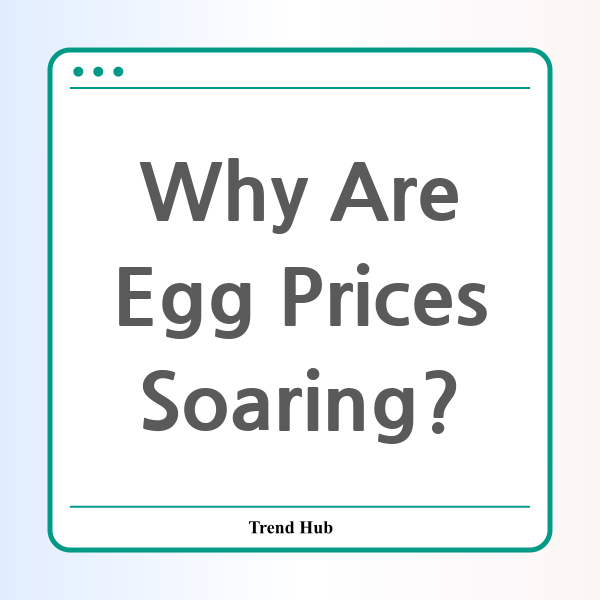* This website participates in the Amazon Affiliate Program and earns from qualifying purchases.

Have you noticed the price of eggs skyrocketing lately? You’re not alone. With record-high prices becoming the norm and projections indicating they might remain elevated indefinitely, it’s essential to understand the reasons behind this trend. This post dives deep into the factors causing the surge in egg prices and how the ongoing avian flu outbreak is at the heart of this issue.
According to estimates from the U.S. Department of Agriculture (USDA), egg prices are expected to rise by about 20% in 2025, a stark contrast to the approximate 2.2% increase in food prices overall. This discrepancy is primarily due to the ongoing effects of the avian flu that has significantly impacted egg production across the nation.
The avian flu, more formally known as highly pathogenic avian influenza, has persisted in the U.S. for over two years, affecting the chicken population drastically. As of January, nearly 4 million commercial chickens and over 86,000 commercial turkeys in Ohio alone have been confirmed positive for bird flu. The disease has led to the depopulation of millions of birds, causing a significant strain on supply and, in turn, driving up prices.
For instance, the average price for a dozen large, grade-A eggs soared to $4.15 in December, a significant increase from $2.51 just a year prior. In some regions, wholesale prices have reached as high as $7.27 per dozen, a far cry from the five-year average of just $2.10. This surge in prices has forced many grocery stores to implement purchase limits, striving to manage the panic buying behavior seen in consumers.
What's Behind the Price Surge?
- Avian Flu Outbreaks: The ongoing avian flu outbreaks have resulted in the culling of millions of egg-laying hens, severely limiting the supply of eggs available in the market. The USDA reports that states like California, Indiana, Missouri, North Carolina, and Ohio have been hit particularly hard.
- Inflation: The overall inflation affecting the economy has played its part. While food prices are rising, egg prices are increasing at a more alarming rate due to their unique circumstances, including health concerns and supply chain issues.
- Increased Demand: Demand for eggs has surged. With holiday baking, cold winter months, and upcoming holidays, consumers have been purchasing more eggs than ever. This trend has persisted for over 20 consecutive months, contributing to the ongoing price increase.
- Regulatory Changes: Simultaneously, states are increasingly implementing cage-free laws, requiring that eggs sold come from cage-free environments, which drives up production costs and ultimately translates to higher prices for consumers.
The impact of the avian flu is compounded by broader industry challenges. Farmers have reported that effective biosecurity measures are in place, yet the virus persists and continues to infect flocks. Each time a bird tests positive, the entire flock must be culled, and the process of repopulating the farms is lengthy and expensive, creating a cycle that’s hard to break.
The Future of Egg Prices
As of now, predictions indicate that we may never see the return of pre-pandemic egg prices. Experts note that the chicken industry is experiencing unprecedented hardships, and with the current bird flu situation, high prices are likely to remain the new normal. The continual strain on supply chains and the rise in production costs, mainly due to strict animal welfare regulations, suggest a long-term upward trend in egg pricing.
Consumers can prepare for this reality by exploring alternative protein sources while remaining aware of the fluctuations in egg pricing. While eggs have traditionally been a budget-friendly protein option, the landscape is changing, and adapting to these changes will be essential.
In conclusion, the outlook for egg prices remains challenging. By understanding the complexities of supply, demand, and disease impact, consumers can better navigate their grocery bills and remain informed about their choices. Stay tuned for updates as we monitor this ongoing situation!
* This website participates in the Amazon Affiliate Program and earns from qualifying purchases.